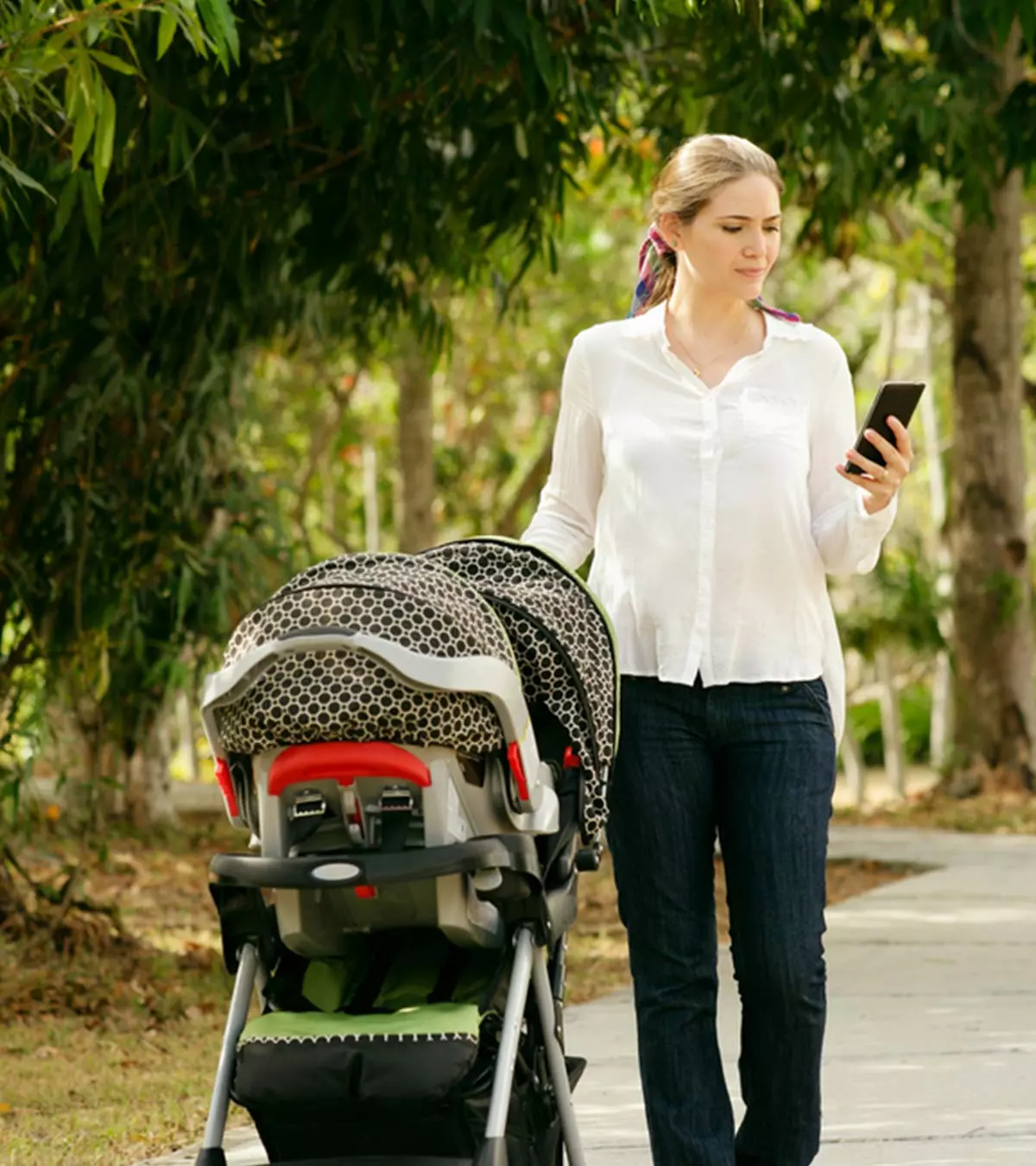
Image: iStock
Labor is a long and painful process that birthing mothers have to go through. No wonder that when we think about labor what readily comes to mind are the painful screams of the mother and the exhortations of “push it!” by the doctor or the nurse. In modern medical practices, anesthesia is usually used to subdue this pain. However, more and more research is suggesting that there are chances of complications from the use of anesthesia (1). Anesthesia, if not properly administered, can pose risks to both the mother and the child.

So, you must be wondering whether there are ways to mitigate the pain during labor in ways other than the use of anesthesia. We’re glad to inform you that there are indeed many techniques that can aid mothers to reduce the level of pain during labor. Come to think of it, we didn’t always have hospitals and advanced medicines. In the old days, childbirth was usually taken care of at home by midwives. It’s only logical that certain techniques in managing pain during labor were developed or discovered. In this article, we will discuss some of these methods and techniques that can come in handy for mothers who decide to not opt for anesthesia during childbirth:
1. Massage Therapy

Image: Shutterstock
Haven’t we all felt rejuvenated and energetic after a good session of massage? The benefits of massage work for women in labor too. Massage has been found to be very effective at alleviating back and feet pain that expecting mothers often have to suffer from. It is also observed that massage therapy contributes towards the reduction in cortisol levels, leading to the lowering of stress and anxiety. This happens to have a calming effect on the mother as well as the child. Last but not the least, massage therapy has proved to be helpful in dealing with postpartum depression in new mothers (2).
With such a plethora of benefits, we would urge all expecting mothers to have some sessions of massage under proper supervision. You can have a discussion about arranging massage sessions during or after labor with the hospital authorities.
2. Alternating Warm And Cold Treatment

Image: Shutterstock
Alternating between applying hot and cold packs could prove to help a woman in labor. You could apply a cool cloth to the forehead with a warm one on the lower back. For maximum effect, change the heat and cold locations frequently, every twenty minutes. Using heat or cold on separate parts of the body simultaneously can provide particularly effective pain relief (3). It is a simple, inexpensive yet effective method that can soothe the body and joints from wear and tear faced during labor.
3. Physical And Mental Relaxation

Image: Shutterstock
Relaxation is more than telling a woman in labor to “relax”. Mental relaxation varies from positive re-affirmations such as “I can do this” to guided images and visuals that can distract the women from labor pain. It’s important that expecting mothers in the late stages of pregnancy don’t bog themselves down with all the worries in the world. Forget the hassles of life or job, and just go through labor with a relaxed state of mind. Other things can wait for now!
A good and happy mental state often also translates to physical calmness. You can employ meditation and stretching to further relax your body and mind.
4. Movement and Position Changes

Image: IStock
You may experience less pain in some positions than in others during labor. Women in labor tend to find upright positions most comfortable. Positions such as sitting, standing, and walking help women deal with pain during labor. Lying down positions may help as labor advances. Many women prefer moving about than staying completely still for extended periods. It may relieve pain by shifting pressure and allowing the baby to move. So, try sitting or kneeling. You could also try to stand, lie down, or get on your fours. Walking could help too (4).
5. Breathing

Image: IStock
If you’ve watched any birthing scene on TV, you would have noticed that the most common thing a doctor says to a woman in labor is to “breathe”. Breathing techniques can work wonders to manage pain and advance delivery. Most women find it helpful to practice deep breathing during labor. It helps mother and baby stay well oxygenated and prove to be a distraction from the pain. Patterned breathing techniques help enhance oxygen flow to your baby. It also helps provide oxygen to the contracting uterus.
6. Hydrotherapy

Image: IStock
You read that right. Water can help ease labor pain, which is probably why water births have become so popular in the recent past. Some of the high-end therapies include reclining in jacuzzi and bubbled water. Advocates of hydrotherapy even suggest that water immersion may accelerate labor, decrease blood pressure, enhance relaxation and comfort, and decrease pain and anxiety during birth (5).
7. Aromatherapy

Image: IStock
Aromatherapy may help some women during labor. While no evidence suggests that aromatherapy reduces pain during delivery, some women find the smell of essential oils pleasant. However, pregnant and laboring women are susceptible to smell, so it could cause some discomfort too. Therefore, ensure that you use a scent that you enjoy and stop as soon as you start to feel any discomfort.
8. Support Of Near And Dear Ones

Image: Shutterstock
It is natural to be terrified during labor. But when you have your loved ones around you, it might seem a little less scary. Partners, family members, friends, or any other close relatives present with you during labor can help ease your fear, pain, and anxiety. They are probably as important as the doctor themselves. They help create an atmosphere of trust and can support you. They can help you into positions of comfort, on and off the birth ball or peanut ball, massage you, offer companionship, help you breathe through painful contractions, give you ice chips, and verbally encourage and reassure you through the entire process.
Labor is a difficult process, and it helps if you’re in the most comfortable headspace. If you want to go through labor without any pain medications, it’s entirely up to you. With these few natural pain management techniques, you might find some relief during labor. However, if you change your mind during labor and wish to receive pain medication, speak to your doctor. They will gladly administer epidurals or other pain relief medication to help you through it. Whatever you choose, you are still doing something great. You’re bringing life into the world, and no one can take that away from you. Did you opt for natural pain management techniques during labor? Let us know in the comments below!
References
- Epidemiology of Anesthesia Related Complications in Labor and Delivery New York State 2002-2005
https://www.ncbi.nlm.nih.gov/pmc/articles/PMC3391736/ - Pregnancy And Labor Massage
https://www.ncbi.nlm.nih.gov/pmc/articles/PMC2870995/ - The Effect Of Intermittent Local Heat And Cold On Labor Pain And Childbirth Outcome
https://www.ncbi.nlm.nih.gov/pmc/articles/PMC3872865/ - Nonpharmacologic Pain Management During Labor
https://www.nwh.org/patient-guides-and-forms/maternity-guide/maternity-chapter-3/comfort-measures-during-labor-and-delivery-non-pharmacological-methods - Hydrotherapy In Labor
https://pubmed.ncbi.nlm.nih.gov/12501738/
Community Experiences
Join the conversation and become a part of our nurturing community! Share your stories, experiences, and insights to connect with fellow parents.












